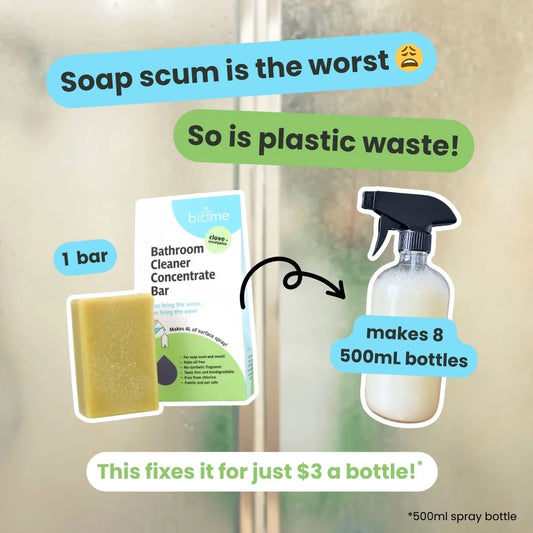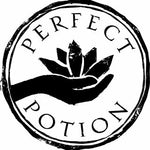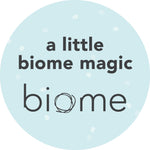The controversy surrounding palm oil is hardly new. It’s long been known that palm oil is harmful to the environment and wildlife habitats.
Despite this, the demand for palm oil continues to grow exponentially. It is the most consumed vegetable oil in the world, with a whopping 72% of palm oil used in the food industry.
You may not cook with it or use palm oil on its own, but it’s highly likely that you use and eat palm oil-containing products.
So, what products contain palm oil? In this guide, we outline which products typically include palm oil and share how you can ensure you’re opting for ethically-sourced products.
What is Palm Oil?
Palm oil is the most widely-consumed vegetable oil on the planet.
It is derived from the fruits of the palm oil tree. The fruits produce both palm oil and palm kernel oil.Palm oil is extracted from the fruit’s pulp and is edible, hence why it’s used in food products. Palm kernel oil, on the other hand, is taken from the seed of the fruit and is commonly used in cosmetics and household products. It grows in tropical rainforests from two main species of trees; the Elaeis guineensis, native to West Africa, and the Elaeis oleifera, native to Central and South America.
Both types of palm oil trees now grow in other tropical regions, including New Guinea, Colombia, Ghana, and Malaysia. Palm oil is the most efficient type of vegetable oil to produce, however, palm oil plantations are responsible for a significant amount of deforestation in Indonesia and Malaysia.
Uncontrolled forest clearing for palm oil plantations has led to the loss of irreplaceable, biodiverse forests and the wildlife that inhabit them.
What is Palm Oil Used For?
A whole range of common food and household products contain palm oil. Palm oil is actually the second-most widely produced edible oil in the world.
Australia imports around 130,000 tons of palm oil each year. It’s found in approximately 50% of packaged foods in Australia.
Unfortunately, most products using palm oil aren’t clearly labelled as doing so. Palm oil can appear under many different ingredient names — in fact, it appears under 200 different names, including
- Palm Oil Kernel
- Elaeis guineensis
- Palmitic Acid
- Palmitate
- Palmate
- Hydrated palm glycerides hexadecanoic
There are also a number of products likely to be palm oil, including
- Vegetable oil
- Stearic Acid
- Sodium Lauryl Sulphate
- Sodium Dodecyl Sulphate
- Sodium Laureth Sulphate
- Calcium Stearoyl Lactylate Steareth
Palm Oil-Containing Products
Palm oil is used in a number of products stocked up on Australian shelves.
It’s used in foods for a few different reasons.
Firstly, it’s very efficient to grow. Palm oil crops are around nine times more productive per hectare than the next most productive oil.
It’s also semi-solid at room temperature, which means it contains less trans fats than hydrogenated oils. This makes it a healthier option that won’t raise our cholesterol.
Palm oil is also tasteless and odourless, so it’s an ideal additive in multiple food products and can yield different results depending on how it’s used — it can create crispy, crunchy, creamy, and soft textures.
It’s also resistant to oxidation, which gives it a longer shelf-life.
When it comes to household products, palm oil is used as a foaming agent. It’s preferred to other ingredients as it's easy to apply and cheap to source.
Foods with Palm Oil
So, what kinds of foods contain palm oil? Let’s take a look.
- Pizza Dough: Palm oil is commonly added to frozen and fresh dough to prevent it from sticking and to improve texture.
- Instant Noodles: Palm oil actually accounts for up to 20% of the product weight of instant noodles. It is used to pre cook the noodles, so you can just add water and they’re good to go.
- Ice Cream: Palm oil helps to make ice cream smooth and creamy.
- Margarine: Palm oil is used in margarine because it’s solid at room temperature and doesn’t contain trans fats.
- Chocolate: Palm oil helps create chocolate's smooth and shiny appearance and stops it from melting.
- Baked Goods: Palm oil gives baked goods a creamy taste and texture and helps to make cakes airier and soft.
- Packaged Bread: Palm oil is typically used in bread because it’s cheap, solid at room temperature, and easy to bake with. It also allows the loaves to remain soft on the shelves.
- Cereal: Palm oil helps to keep cereals crunchy and fresh.
- Chips: As it's cheaper than other vegetable oils, palm oil is often used to fry potato chips.
- Dried Nuts: As palm oil can help enhance certain foods' crunch, it’s commonly used to roast nuts.
- Canned Soup: Palm oil also acts as a preservative in processed and frozen meals.
- Fast Foods: Palm oil leaves a less greasy finish than most other vegetable oils, making it ideal for adding to fast food products.
- Powdered Gravy: Palm oil gives gravy granules a thick consistency when water is added to them.
- Microwave Popcorn: Palm oil helps packet popcorn kernels pop when heated in the microwave.
- Non-dairy Cream Component: For non-dairy creamers, palm oil adds a thick, creamy texture.
- Peanut Butter: Palm oil prevents the nut oil from separating from the solid part of the peanut. This means that the peanut butter doesn’t need to be stirred in the jar, and can spread more evenly.
- Salad Dressing: Palm oil is stable due to its high vitamin E content and natural anti-oxidative properties.

Household Products with Palm Oil
Many household and beauty products also contain palm oil.
- Lipstick: Palm oil is frequently used in lipsticks because it holds colour well, doesn’t melt at high temperatures, has a smooth texture, and is odourless and tasteless.
- Shampoo: Palm oil is used as a conditioning and foaming agent in shampoo that helps to restore the hair’s natural oils, which are stripped away by most other shampoos.
- Soap: Palm oil can help to remove oil and dirt from hair and skin and also contains moisturising properties.
- Detergent: Palm oil is refined to create detergent and cleaning products, primarily thanks to its ability to foam when used.
- Biodiesel: Palm oil can be used to produce biodiesel and biofuel.
Why is Palm Oil So Widely Used?
As we can see, palm oil is an incredibly versatile material with multiple beneficial properties and functions.
It’s semi-solid at room temperature so it can keep spreads spreadable, and is also resistant to oxidation, offering products a longer shelf life.
It’s stable at high temperatures, which is why it’s used to give fried foods a crunchy finish. One of the key benefits of palm oil is that it is odourless and flavourless, so it won’t change the look or smell of food and cosmetic products.
Compared to other vegetable oils, palm oil can produce high quantities of oil across small areas of land, making it a more environmentally-friendly option, but only when extracted sustainably — which it rarely is.
What are the Drawbacks of Palm Oil?
While palm oil can be sourced responsibly, unfortunately, it continues to be produced and sourced in unsustainable, environmentally-threatening ways.
It continues to be a major reason for deforestation.
This significant deforestation destroys the habitats of endangered species including tigers, elephants, orangutans, and rhinos.
The loss of forests — in conjunction with the conversion of carbon-rich peat soils — results in millions of tonnes of greenhouse gases being released into the atmosphere, which contribute to climate change.
The palm oil industry also continues to grapple with the exploitation of workers and child labour.
How Can I Help?
When shopping, we recommend opting for 100% palm oil-free products where possible. At Biome, we are 100% palm oil-free, so you can shop a range of food and drink, cosmetics, and household cleaning items without worrying about palm oil content.
If you need to shop palm oil-containing products, keep an eye out for the RSPO label. This label signifies that the products were made using certified palm oil, which is palm oil that was produced in environmentally and socially responsible ways.
The packaging of food products also typically includes company contact information. If you notice a palm oil-containing product doesn’t have an RSPO label, consider calling or writing to the company to urge them to use certified sustainable palm oil.
You can also write to the government and politicians, asking them what they’re doing to achieve mandatory labelling of palm oil.
Lastly, where you can, avoid purchasing palm oil-based products that don’t have an RSPO label.

A Final Word
While palm oil is responsible for a significant amount of deforestation and wildlife endangerment, it can be produced responsibly in ways that respect the environment and communities where it is grown.
Now that you know what products contain palm oil, you can take extra care when shopping for these products. If you need to use palm oil-containing products, always aim to choose products with the RSPO label and avoid those without them.
At Biome, we are a 100% palm oil-free store. After years of asking companies to declare palm oil use on their packaging, nothing seemed to be changing. So, we decided to remove all palm oil-based products from our stores until we can be sure of where and how the palm was grown.
You can support the companies striving for a palm oil-free future at Biome. You can shop food, cosmetics, and household products with the peace of mind that your money isn’t going towards unsustainable palm oil practices.





































